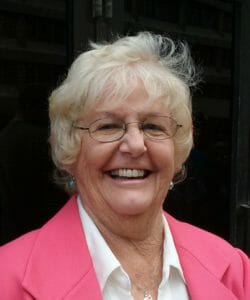
So much has been written, proposed and discussed about improving care in skilled nursing and long-term care, but nothing really changes.
In the April issue of McKnight’s, an article addressed President Biden’s proposal for “reshaping” nursing homes and providers’ less than enthusiastic response.
Why? I ask. The proposal is simply old issues being revisited with no real answer for the problems at hand. For too many years, committees have met to go over the same issues and try to put rational solutions to irrational situations.
The bottom line for improving care is to have qualified, competent hands-on caregivers. Easier said than done, you say. Not if you are serious about making it happen.
I ask you to think about a winning NBA team. Having five players as main starters that religiously practice almost daily. Along with the A team, all players assigned to the team must be included in every practice to be familiar with the plays and team movements should a starting player be injured or ill. It creates a seamless substitution when necessary.
Now take the nursing team on a long-term care unit. This consists of a nurse supervisor for the facility, an LPN medication nurse for the team and three to four nursing assistants for 20 to 25 residents. One nursing assistant calls off, and the supervisor pulls a nursing assistant from a team with fewer residents.
We then have two dysfunctional teams. The nursing assistant pulled to the first team is not familiar with the residents or workings of the team, and the second team is now down one nursing assistant creating stress on the team to complete their assignments while providing their best care. Minimum staffing guidelines have been met, but the changes cause disruptions in care for both teams and insecurity for the residents.
Several years ago, I attended a conference offered by Direction Home in which a consulting company introduced a staffing model that made sense. The core idea is that consistent assignments work best, especially when they have tremendous support from the rest of the organization.
The plan is a simple one, but getting there takes time and planning.
It starts with a DON, two ADONs and teams consisting of one LPN for meds and RX and two nursing assistants for 16 residents. One MDS RN will cover two teams and 32 residents. The RN will oversee admissions and responsibility for the plan of care and inform caregivers of the resident’s conditions and needs. A detailed description of responsibilities for each member of the team is essential.
A well-trained on-call team should be available when necessary. Each team should try to have a member of their team to respond for call-offs before trying the backup on-call team.
I was in awe of this plan and could not wait to bring it back to my facility.
It was not well accepted. I was told that no one would go along with the changes, and nurses and staff would refuse to work such shifts.
I guess I am too old school, but I feel those who come to work in nursing homes want to do whatever is necessary to assure better care for the residents and have safe, functional working conditions for the staff.
Once a system is set up to allow teams to remain as teams working together on a regular basis, they will be able to deliver better care as they know what is expected of them and how to deliver it. The residents are happy with consistent caregivers who understand their needs and idiosyncrasies.
Staff members are people too. The work environment can lure them in or chase them out. Knowing what to expect, how to handle it and that they have a consistent support group to work with can eliminate many negatives regarding showing up for a shift. Staff who can perform with less stress and more positive outcomes are less likely to leave for other work opportunities while sharing the positive attributes with friends, relatives etc., resulting in increased staffing and residents.
In my work in long-term care, I was never satisfied that we delivered the care we hoped for and continually strived for improvement. We just kept burning out qualified staff members and left residents in need.
Obviously, I cannot guarantee this is the solution, but I feel it may answer the questions and have positive outcomes for both residents and staff.
Virginia Bache has more than fifty-five years of experience as a registered nurse, BSN, DON, and NHA. Her career includes time spent as a nurse in the ER, medical-surgical, and the Air Force, with the last twenty years spent in skilled nursing and long-term care administration.
The opinions expressed in McKnight’s Long-Term Care News guest submissions are the author’s and are not necessarily those of McKnight’s Long-Term Care News or its editors.




